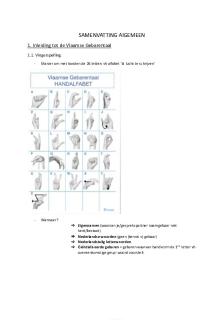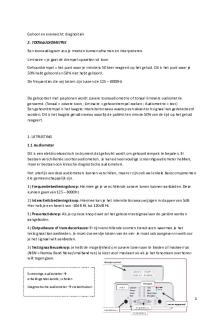Powerpoints - Summary of Powerpoint: Charlemagne PDF

| Title | Powerpoints - Summary of Powerpoint: Charlemagne |
|---|---|
| Course | At the Roots of European Culture |
| Institution | Cardiff University |
| Pages | 5 |
| File Size | 193.9 KB |
| File Type | |
| Total Downloads | 23 |
| Total Views | 129 |
Summary
Summary of Powerpoint: Charlemagne ...
Description
Week 9 Lecture 1 Charlemagne (748 - 814) - Also known as Charles the Great or Charles the First - King of the Franks who united most of Western Europe during the early middle ages and laid the foundations for Modern France and Germany 768: Frankish throne 774: King of Italy 800: Holy Roman Emperor (first since the fall of the roman empire three centuries earlier) *Carolingian Empire ● ● ●
Conquests became the driving force force for european politics between the Muslim defeat at Poitiers and the CRUSADES Dominated military history of Medieval Europe Empire spanned France, Western Germany and Northern Italy
Einhard: Saxon War 1: - Would’ve ended faster if the faithlessness of the Saxons had allowed it - They usually surrendered humbly to the King - Handed over hostages without delay - Sometimes so broken that they promised to give up Paganism and convert to Christianity - Quick to break their promises -
King firmness of mind could not be conquered by their mutability. Never allowed disloyalty to go unpunished Demand a fitting punishment Moved 10,000 men and their families from both sides of the River Elbe and dispersed
them throughout Gaul and Germany in many group Saxon War III: - Lasted many years - Ended as long as the people rejected worship of demons, abandon their ancestral rites, and would form one people with the Franks ● ●
Scholarly reaction of Einhard’s account has ranged from uncritical acceptance to outright rejection of its historical validity However, as a reflection of the perception of Charlemagne and knowledge about hi at the time, it is immensely valuable.
Notker the Stammerer - Written some decades after Charlemagne’s death - Collection of anecdotes rather than historical fact - Depicts an angry King “Dashed him terror-stricken to the ground” for insulting one of the King’s relations singing
Coronation in Rome 800 AD - Coronation of an emperor was consecration giving moral authority to military power by connecting it to Christian Rome - Was a sincere Christian - Believed, like many rulers at the time, that his aims were in the interest of Christianity, even when attacking the Christian and Catholic King of the Lombards
● ● ●
No likenesses are known of Charlemagne Durer must have invented his portrait Charlemagne’s appearance influences depictions of the Emperor until the 19th Century
Alcuin - Born into a prominent family from the East of England - Sent to York to become a pupil, and eventually a Headmaster at Headmaster Ecgberht’s School (778)
-
BUilt a superb library and made the school a chief learning centre in Europe
781: invited to become master of Charlemagne’s Palace School at Aachen - Effectively minister of Education for C’s empire - Developed Carolingian miniscule: clear script showing the way that letters of the roman alphabet should be written ●
Responsible for the most precious of Carolingian codices, now called the Golden Gospels - Major impact on the history of mathematics - Clear copying process of the miniscule allowed the works of the ancient Greek mathematicians to survive ●
Became a personal friend of Charlemagne and taught his two sons
Christianization: ● Waged war on Pagan Saxons for over 20 years and they repeatedly refused christianization ● Saxons one of the last groups to be converted to Christianity, done mainly under threat of death ● Difficult for many reasons: distance from Rome, lack of centralised policy and pagan beliefs were very strongly tied into their culture
Battle of Roncevaux Pass: 778: Roland was defeated by the basques (Commander of the Rearguard of Charlemagne’s army) - Fought at Roncevaux pass, a high mountain pass in the Pyrenees on the border between France and Spain - Roland is one of the most celebrated figures of medieval european history Einhard: - Constantly pursuing war with the Saxons - Placed garrisons at suitable points along the frontier and attacked Spain with as big a force as possible - Recieved the surrender of all the towns and fortified places he came to - Returned his army safe and in tacts - Army advancing with a long baggage train - Basques had set their ambsuh at the top of the mountain, where they were hidden by the dense forrest - Attacked the rear and drove the men into the valley below - Killed them to the last man, plundered the baggage and fled in all directions - Basques were aided by their light weopans and their tactical positioning - Frank army had heavy weapons and did not know the land - Many of Charlemagne’s main officers were killed in this battle (Anselm, Roland and Eggihard) ●
Song of Roland: battle was romanticised bu oral tradition into the major conflict between the Muslims and Christians
- Legend is recounted in the 11th Century “song of roland” which is the oldest surviving major work of French literature ● Saxons highly valued swords - Main weapon of choice - Were never buried with them due to their worth - Passed from Father to son - Greater value if older or previously possessed by famous person Saxon Beliefs - Worshipped many Gods (Pagans) - Death: either cremated and put in an urn or buries 785: C put in place a structure that enabled Saxony to be governed less as a Colony and more a an integral part of his kingdom 772: Attacked Saxony and detroyed Irminsul* 804: Mass deportation in order to solve the Saxon problem - Christianization was central to Charlemagne’s policy *Great wooden pillar erected and worshipped beneath the open sky “all sustaining pillar” ●
Massacre of Verden (782) : 4,500 captive rebel saxons murdered
Week 9 Lecture 2
-
Great Warrior Expanded from a small region in France to include what we know as western europe Promoted Christianity, education and learning Link between the germanic and roman political worlds Hailed “father of europe”
● Charlemagne Prize - Winners include: Winston Churchill, Tony Blair and Angela Merkel ● Military pragmatism - Pragmatic, but opportunistic when necessary - First and foremost, King of the Franks Had four main areas he wished to dominated: Northern Italy (ruled by the Lombards) Duchy of Bavaria Avar controlled territories Saxony
●
The first three areas were eliminated as a source of opposition and absorbed with relative ease
Saxony - Difficult due to the degree of saxon organisation - Each regional community had a representative/leader - All of them would meet up annually to discuss laws, deliver judgement on legal cases and plan military campaigning or peace ●
Imperial crown of the Holy Roman Empire (Symbol of Charlemagne as unifier?)
Harun al-Rashid 802: Gifted the first elephant north of the alps to Charlemagne
Making of the Empire 772-85 : Saxon Wars 773-801: Italy and Spain 781-88 : Tassio and Bavaria 788-99 : Conflict on the Steppes / The Avars
●
Featured heavily in historical fiction
Education ● Instituted a school in his palace ● Brought scholars from all over Europe ● Alcuin: “greatest scholar of his time” ● First attempts to apply logic to classical theology
● He travelled from residence to residence 777: celebrated easter in his newly built Valkhof in the old roman town of Nijmegen...
Similar Free PDFs

Charlemagne Essay
- 2 Pages

Samenvatting Powerpoints algemeen
- 22 Pages

Conservationism powerpoint
- 1 Pages

BETON POWERPOINT
- 25 Pages

Final powerpoint
- 8 Pages

Hepatic powerpoint
- 11 Pages

Computertraining (Powerpoint)
- 8 Pages

Ejercicios powerpoint
- 14 Pages

Ejercicios powerpoint
- 14 Pages
Popular Institutions
- Tinajero National High School - Annex
- Politeknik Caltex Riau
- Yokohama City University
- SGT University
- University of Al-Qadisiyah
- Divine Word College of Vigan
- Techniek College Rotterdam
- Universidade de Santiago
- Universiti Teknologi MARA Cawangan Johor Kampus Pasir Gudang
- Poltekkes Kemenkes Yogyakarta
- Baguio City National High School
- Colegio san marcos
- preparatoria uno
- Centro de Bachillerato Tecnológico Industrial y de Servicios No. 107
- Dalian Maritime University
- Quang Trung Secondary School
- Colegio Tecnológico en Informática
- Corporación Regional de Educación Superior
- Grupo CEDVA
- Dar Al Uloom University
- Centro de Estudios Preuniversitarios de la Universidad Nacional de Ingeniería
- 上智大学
- Aakash International School, Nuna Majara
- San Felipe Neri Catholic School
- Kang Chiao International School - New Taipei City
- Misamis Occidental National High School
- Institución Educativa Escuela Normal Juan Ladrilleros
- Kolehiyo ng Pantukan
- Batanes State College
- Instituto Continental
- Sekolah Menengah Kejuruan Kesehatan Kaltara (Tarakan)
- Colegio de La Inmaculada Concepcion - Cebu






